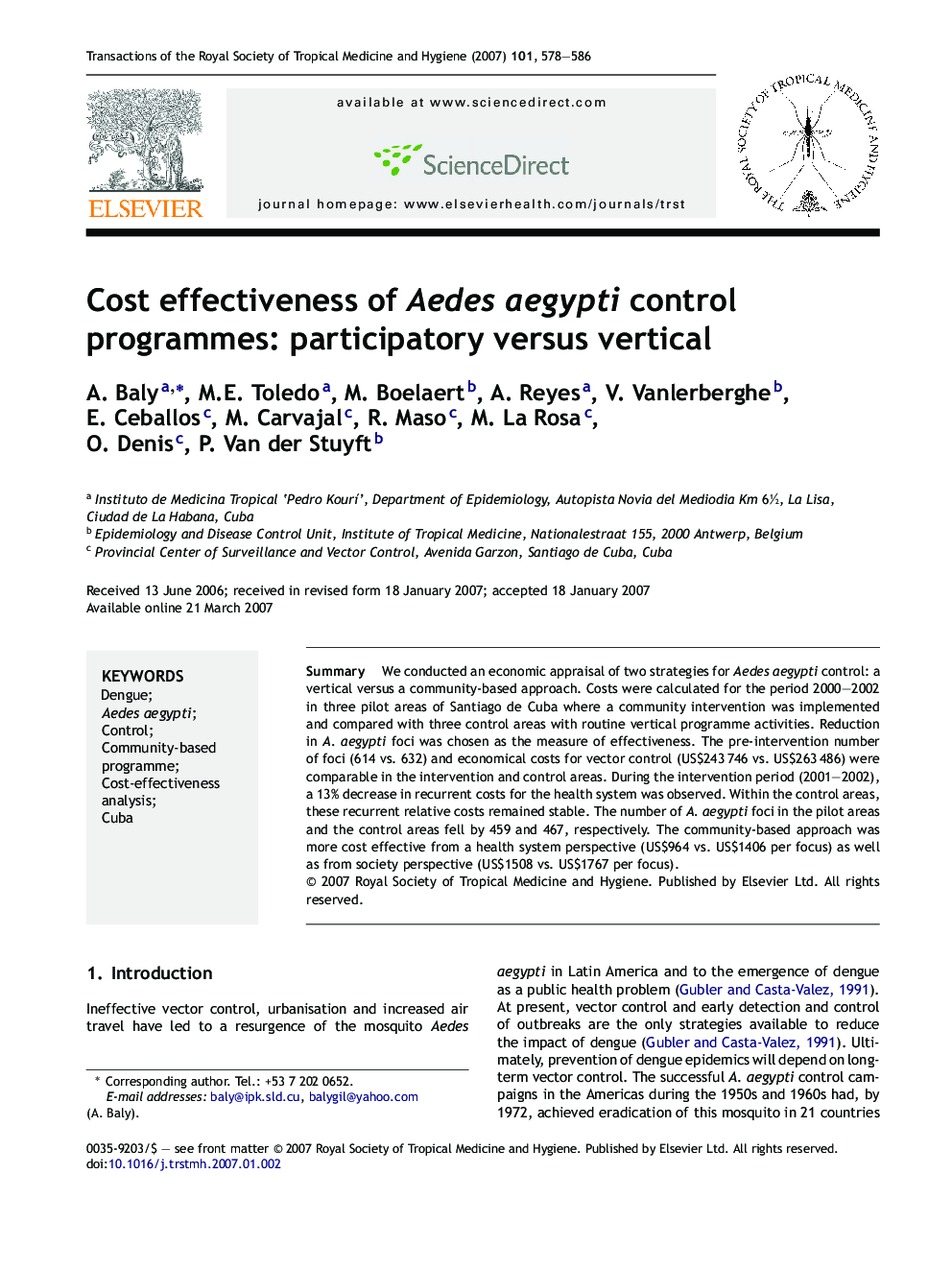| Article ID | Journal | Published Year | Pages | File Type |
|---|---|---|---|---|
| 3420855 | Transactions of the Royal Society of Tropical Medicine and Hygiene | 2007 | 9 Pages |
Abstract
We conducted an economic appraisal of two strategies for Aedes aegypti control: a vertical versus a community-based approach. Costs were calculated for the period 2000-2002 in three pilot areas of Santiago de Cuba where a community intervention was implemented and compared with three control areas with routine vertical programme activities. Reduction in A. aegypti foci was chosen as the measure of effectiveness. The pre-intervention number of foci (614 vs. 632) and economical costs for vector control (US$243Â 746 vs. US$263Â 486) were comparable in the intervention and control areas. During the intervention period (2001-2002), a 13% decrease in recurrent costs for the health system was observed. Within the control areas, these recurrent relative costs remained stable. The number of A. aegypti foci in the pilot areas and the control areas fell by 459 and 467, respectively. The community-based approach was more cost effective from a health system perspective (US$964 vs. US$1406 per focus) as well as from society perspective (US$1508 vs. US$1767 per focus).
Related Topics
Life Sciences
Immunology and Microbiology
Applied Microbiology and Biotechnology
Authors
A. Baly, M.E. Toledo, M. Boelaert, A. Reyes, V. Vanlerberghe, E. Ceballos, M. Carvajal, R. Maso, M. La Rosa, O. Denis, P. Van der Stuyft,
